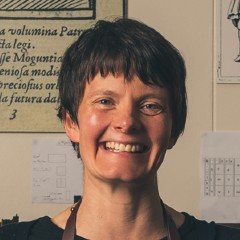You are not currently logged in. Please create an account or log in to view the full course.
A Trip to the Theatre
- About
- Transcript
- Cite
Shakespeare: Romeo and Juliet
In this course, Professor Helen Smith (University of York) explores Shakespeare’s Romeo and Juliet. In the first module, we imagine a trip to the theatre in the late 16th century, thinking about the literary, historical and theatrical context of the play. After that, we think about the presentation of love in the play, before turning in the third module to the themes of books and bookishness, reading and being read, and the extent to which Romeo and Juliet’s unique publication history might impact our interpretation of the play. In the fourth module, we think about Romeo and Juliet as a play to be acted and seen – the physicality of the actors, the importance of posture and gesture, etc. in interpreting the play – before turning in the fifth module to the critical history of the play from its earliest viewers such as Francis Meres and Samuel Pepys (“the worst [play] I have ever seen in my life”) to the direction of scholarship in the twenty-first century.
Note: We used the Arden edition of the play (Third Series, ed. René Weis). Students using a different version of the play may encounter slight differences in both the text and line numbers.
A Trip to the Theatre
In this module, we imagine ourselves going to the theatre in the 1590s to watch a new play called ‘Romeo and Juliet’, focusing in particular on: (i) the theatrical context: the location of the theatre (simply called ‘The Theatre’) in Shoreditch, the acting company (The Lord Chamberlain’s Men) and its most famous actor (Will Kemp), the playwright (Mr. William Shakespeare, most well-known for his narrative poem Venus and Adonis), and some of his more famous contemporaries (Thomas Kyd, Christopher Marlowe); (ii) the sources for the play, including Arthur Brooke’s Tragicall Historye of Romeus and Juliet (1562), Matteo Bandello’s Novelle (1554), Luigi da Porto’s Historia Novellamente Ritrovata (1524) and Dante’s Divine Comedy; (iii) the tension between Italian setting of the play and its engagement with English folklore (Queen Mab) and contemporary history (the 1592-3 London plague); and (iv) the genre of the play, which looks for so long as if it will be a comedy.
Cite this Lecture
APA style
Smith, H. (2020, January 21). Shakespeare: Romeo and Juliet - A Trip to the Theatre [Video]. MASSOLIT. https://massolit.io/courses/shakespeare-romeo-and-juliet/love-2e46dde3-6401-41d0-857f-4125dc69b185
MLA style
Smith, H. "Shakespeare: Romeo and Juliet – A Trip to the Theatre." MASSOLIT, uploaded by MASSOLIT, 21 Jan 2020, https://massolit.io/courses/shakespeare-romeo-and-juliet/love-2e46dde3-6401-41d0-857f-4125dc69b185

